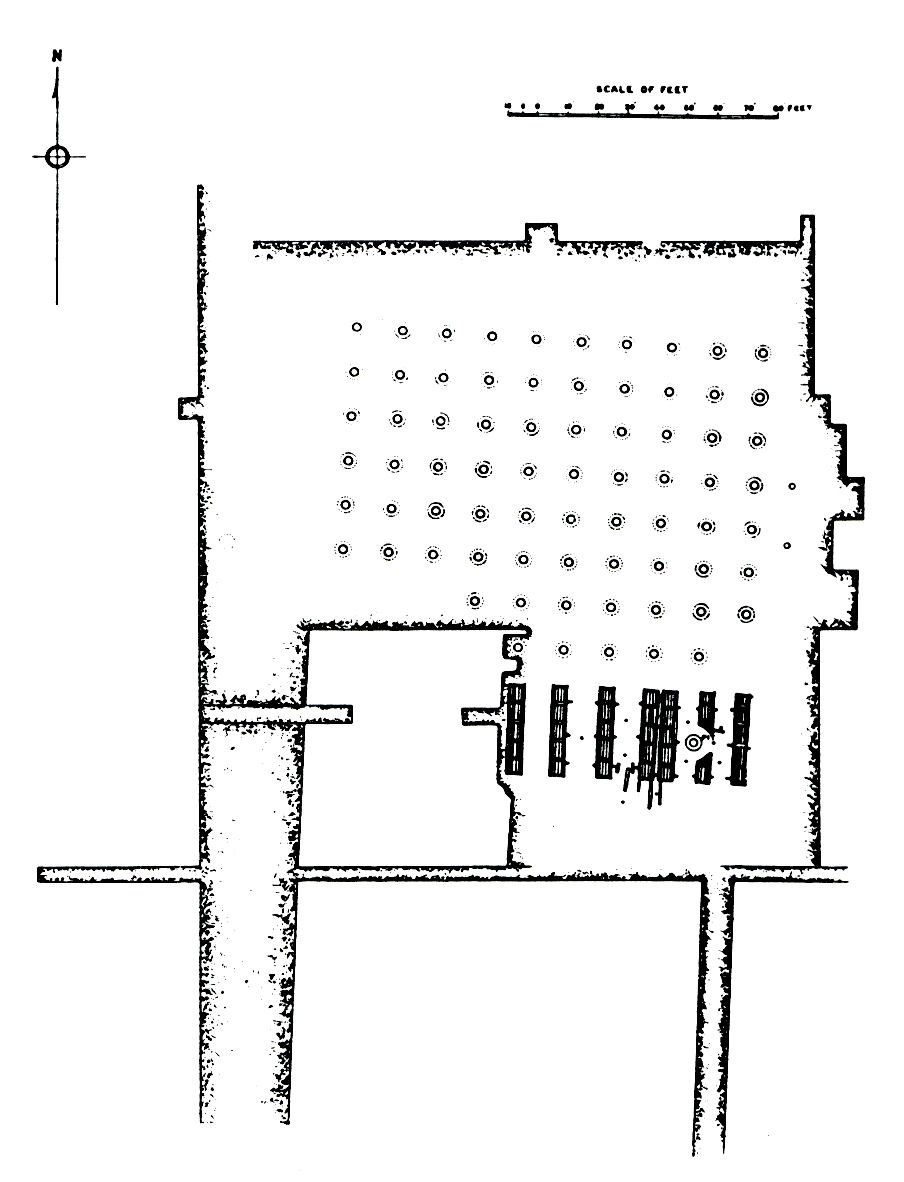|
Shikhara
''Shikhara'' (IAST: '), a Sanskrit word translating literally to "mountain peak", refers to the rising tower in the Hindu temple architecture of North India, and also often used in Jain temples. A ''shikhara'' over the ''garbhagriha'' chamber where the presiding deity is enshrined is the most prominent and visible part of a Hindu temple of North India. In South India, the equivalent term is ''vimana''; unlike the ''shikhara'', this refers to the whole building, including the sanctum beneath. In the south, ''shikhara'' is a term for the top stage of the vimana only, which is usually a dome capped with a finial; this article is concerned with the northern form. The southern ''vimana'' is not to be confused with the elaborate gateway-towers of south Indian temples, called ''gopuram'', which are often taller and more prominent features in large temples. It is argued that stylistic aspects seen on Buddhist architecture like the ''stupa'' may have been influenced by the ''shikhara' ... [...More Info...] [...Related Items...] OR: [Wikipedia] [Google] [Baidu] |
Urushringa
''Urushringa'' (Sanskrit: ''uruśṛn̍ga'' उरुशृङ्ग, lit. ''having high peak'') is a subsidiary tower springing from the sides of the main ''shikhara'' tower in the Hindu temple architecture of northern India. Overview The urushringa is smaller and narrower than the shikhara, and "engaged" or connected to it where they meet, except right at the top. It strengthens the feeling of height given by the temple, and may give some structural support by acting like a buttress, as well as adding to the visual symbolism of the temple as a sacred mountain. They often reflect the complex shape of the sanctuary structure at ground level, following the ''ratha'' projections up into the shikhara. The style of shikhara with urushringas is known as sekhari. Many of the temples in the famous Khajuraho Group of Monuments have sekhari towers, though others do not. On the Kandariya Mahadeva Temple The Kandariya Mahadeva Temple (Devanagari: कंदारिया मह� ... [...More Info...] [...Related Items...] OR: [Wikipedia] [Google] [Baidu] |
Huvishka
Huvishka ( Kushan: Οοηϸκι, ''Ooēški'', Brahmi: 𑀳𑀼𑀯𑀺𑀱𑁆𑀓; ', '; Kharosthi: 𐨱𐨂𐨬𐨅𐨮𐨿𐨐 ', ') was the emperor of the Kushan Empire from the death of Kanishka (assumed on the best evidence available to be in 150 CE) until the succession of Vasudeva I about thirty years later. His rule was a period of consolidation for the Empire. Huvishka's territory encompassed Balkh in Bactria to Mathura in India, locations where it is known that he minted his coinage. Gold coins and amulets in his effigy were found as far as Pataliputra and Bodh Gaya, including one such amulet as an offering under the Enlightenment Throne of the Buddha in Bodh Gaya, suggesting with other finds of Kushan coins in the area that Kushan rule may have extended this far east. His reign seems to have been essentially peaceful, consolidating Kushan power in northern India, and moving the centre of the Kushan Empire to the southern capital city of Mathura. Religion Huvi ... [...More Info...] [...Related Items...] OR: [Wikipedia] [Google] [Baidu] |
Kharoshthi
Kharosthi script (), also known as the Gandhari script (), was an ancient script originally developed in the Gandhara Region of modern-day Pakistan, between the 5th and 3rd century BCE. used primarily by the people of Gandhara alongside various parts of South Asia and Central Asia. it remained in use until it died out in its homeland around the 5th century CE. It was also in use in Bactria, the Kushan Empire, Sogdia, and along the Silk Road. There is some evidence it may have survived until the 7th century in Khotan and Niya, both cities in East Turkestan. History The name Kharosthi may derive from the Hebrew ''kharosheth'', a Semitic word for writing, or from Old Iranian ''*xšaθra-pištra'', which means "royal writing". The script was earlier also known as ''Indo-Bactrian script'', ''Kabul script'' and ''Arian-Pali''. Scholars are not in agreement as to whether the Kharosthi script evolved gradually, or was the deliberate work of a single inventor. An analysis of the ... [...More Info...] [...Related Items...] OR: [Wikipedia] [Google] [Baidu] |
Kumrahar
Kumhrar or Kumrahar is the area of Patna where remains of the ancient city of Pataliputra were excavated by the Archaeological Survey of India starting from 1913. It is located 5 km east of Patna Railway Station. Archaeological remains of the Mauryan period (322–185 BCE) have been discovered here, this include the ruins of a hypostyle 80-pillared hallDevise plan to save Kumhrar site:HC , 1 February 2002. [...More Info...] [...Related Items...] OR: [Wikipedia] [Google] [Baidu] |
Mesopotamia
Mesopotamia is a historical region of West Asia situated within the Tigris–Euphrates river system, in the northern part of the Fertile Crescent. Today, Mesopotamia is known as present-day Iraq and forms the eastern geographic boundary of the modern Middle East. Just beyond it lies southwestern Iran, where the region transitions into the Iranian plateau, Persian plateau, marking the shift from the Arab world to Iran. In the broader sense, the historical region of Mesopotamia also includes parts of present-day Iran (southwest), Turkey (southeast), Syria (northeast), and Kuwait. Mesopotamia is the site of the earliest developments of the Neolithic Revolution from around 10,000 BC. It has been identified as having "inspired some of the most important developments in human history, including the invention of the wheel, the planting of the first cereal crops, the development of cursive script, mathematics, astronomy, and agriculture". It is recognised as the cradle of some of t ... [...More Info...] [...Related Items...] OR: [Wikipedia] [Google] [Baidu] |
Ernest Binfield Havell
Ernest Binfield Havell (16 September 1861 – 31 December 1934), who published under the name E.B. Havell, was an influential English arts administrator, art historian and author of numerous books about Indian art and architecture. He was a member of the Havell family of artists and art educators. He was the principal of the Government School of Art, Calcutta from 1896 to 1905, where, along with Abanindranath Tagore, he developed a style of art and art education based on Indian rather than Western models, which led to the foundation of the Bengal school of art. Early life Ernest was born at Jesse Terrace, Reading in the English county of Berkshire in 1861, the son of an artist Charles Richard Havell and his wife, Charlotte Amelia Lord. The family had several artists and publishers. He went to Reading School and learned art at the Royal College of Art and in Paris and Italy. Art history In India, Havell initially served the Madras School of Art as Superintendent for a dec ... [...More Info...] [...Related Items...] OR: [Wikipedia] [Google] [Baidu] |
Hindu Temple
A Hindu temple, also known as Mandir, Devasthanam, Pura, or Kovil, is a sacred place where Hindus worship and show their devotion to Hindu deities, deities through worship, sacrifice, and prayers. It is considered the house of the god to whom it is dedicated.; Quote: "The Hindu temple is designed to bring about contact between man and the gods of Hinduism religion" (...) "The architecture of the Hindu temple symbolically represents this quest by setting out to dissolve or decrease the boundaries between man and the divine". Hindu temple architecture, which makes extensive use of squares and circles, has its roots in later Vedic traditions, which also influence the temples' construction and symbolism. Through astronomical numbers and particular alignments connected to the temple's location and the relationship between the deity and the worshipper, the temple's design also illustrates the idea of recursion and the Microcosm–macrocosm analogy, equivalency of the macrocosm and t ... [...More Info...] [...Related Items...] OR: [Wikipedia] [Google] [Baidu] |
Gupta Empire
The Gupta Empire was an Indian empire during the classical period of the Indian subcontinent which existed from the mid 3rd century to mid 6th century CE. At its zenith, the dynasty ruled over an empire that spanned much of the northern Indian subcontinent. This period has been considered as the Golden Age of India by some historians, although this characterisation has been disputed by others. The ruling dynasty of the empire was founded by Gupta (king), Gupta. The high points of this period are the great cultural developments which took place primarily during the reigns of Samudragupta, Chandragupta II and Kumaragupta I. Many Hinduism, Hindu Hindu epics, epics and Hindu literature, literary sources, such as the Mahabharata and Ramayana, were canonised during this period. The Gupta period produced scholars such as Kalidasa, Aryabhata, Varahamihira and Vatsyayana, who made significant advancements in many academic fields. History of science and technology in the Indian subcontin ... [...More Info...] [...Related Items...] OR: [Wikipedia] [Google] [Baidu] |
Amalaka
An amalaka (), is a segmented or notched stone disk, usually with ridges on the rim, that sits on the top of a Hindu temple's shikhara or main tower. According to one interpretation, the amalaka represents a lotus, and thus the symbolic seat for the deity below. Another interpretation is that it symbolizes the sun, and is thus the gateway to the heavenly world. The name and, according to some sources the shape, of the amalaka comes from the fruit of ''Phyllanthus emblica'' (or ''Mirobalanus embilica''), the Indian gooseberry, or myrobolan fig tree. This is called ''āmalaki'' in Sanskrit, and the fruit has a slightly segmented shape, though this is much less marked than in the architectural shape. The amalaka itself is crowned with a kalasam or finial, from which a temple banner is often hung. History The shape first appears (or survives) as an element in the capitals of columns around the time of Ashoka in the 3rd century BCE, recurring in some capitals of the 1st century C ... [...More Info...] [...Related Items...] OR: [Wikipedia] [Google] [Baidu] |
Bodh Gaya
Bodh Gayā is a religious site and place of pilgrimage associated with the Mahabodhi Temple complex, situated in the Gaya district in the Indian States and union territories of India, state of Bihar. It is famous for being the place where Gautama Buddha is said to have attained Enlightenment (Buddhism), enlightenment (Pali: ) under what became known as the Bodhi Tree. Since antiquity, Bodh Gayā has remained the object of Buddhist pilgrimage sites, pilgrimage and veneration for Buddhism, Buddhists. In particular, Archaeology, archaeological finds, including sculptures, show that the site was in use by Buddhists since the Mauryan period. For Buddhists, Bodh Gayā is the most important of the four main pilgrimage sites related to the life of Gautama Buddha, the other three being Kushinagar, Lumbini, and Sarnath. In 2002, Mahabodhi Temple, located in Bodh Gayā, became a UNESCO World Heritage Site. History Bodh Gayā is considered the holiest site in Buddhism. Known as Uruvel ... [...More Info...] [...Related Items...] OR: [Wikipedia] [Google] [Baidu] |
Buddhist
Buddhism, also known as Buddhadharma and Dharmavinaya, is an Indian religion and List of philosophies, philosophical tradition based on Pre-sectarian Buddhism, teachings attributed to the Buddha, a wandering teacher who lived in the 6th or 5th century Before the Common Era, BCE. It is the Major religious groups, world's fourth-largest religion, with about 500 million followers, known as Buddhists, who comprise four percent of the global population. It arose in the eastern Gangetic plain as a movement in the 5th century BCE, and gradually spread throughout much of Asia. Buddhism has subsequently played a major role in Asian culture and spirituality, eventually spreading to Western world, the West in the 20th century. According to tradition, the Buddha instructed his followers in a path of bhavana, development which leads to Enlightenment in Buddhism, awakening and moksha, full liberation from ''Duḥkha, dukkha'' (). He regarded this path as a Middle Way between extremes su ... [...More Info...] [...Related Items...] OR: [Wikipedia] [Google] [Baidu] |







